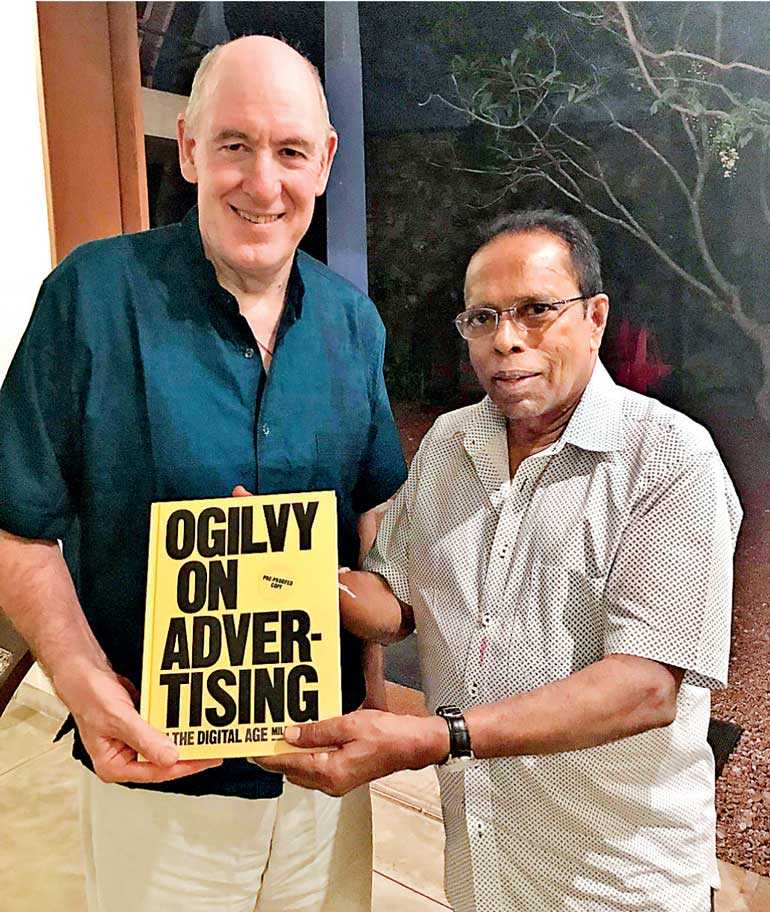Sunday Apr 20, 2025
Sunday Apr 20, 2025
Monday, 23 April 2018 00:00 - - {{hitsCtrl.values.hits}}

Ogilvy Worldwide former CEO and Chairman, current Warden of New College Oxford University, Miles Young presenting his new book ‘Ogilvy on Advertising in the Digital Age’ to Ogilvy Group of Companies Sri Lanka Chairman Irvin Weerackody, recently.
For many people, and for many years, “Ogilvy on Advertising” was somewhat of a Bible on advertising. It was, says author Ogilvy Worldwide former CEO and Chairman Miles Young, a storming success. While it is still relevant, “Ogilvy on Advertising in the digital age” launches readers into 21st century.
Ogilvy on Advertising is widely considered an industry classic, a must-read for anyone interested or pursuing a career in marketing and advertising. But for obvious reasons, not the least of which being the digital revolution, the emergence of social media, and the total fragmentation of media, plenty of the work discussed in the book feels outdated. Back then, you could make a TV commercial and reach 80% of people an average of five times in three weeks, and that was it. No Amazon, no Facebook and no Google. Now, 34 years later, Miles Young has written an updated version, aiming to apply the principles outlined in Ogilvy’s original to the modern era. He cautions those who think digital work and 2017 audiences require dismissing traditional advertising insights.
“The world has changed dramatically, particularly in the last 15 years, and in a sense, some of the things David Ogilvy stood for came under slight attack,” says Young. “Not in a malicious way, but in a way that put his view of advertising on the defensive. That attack came from people who were strong partisans of digital, and some of it was justified while some wasn’t. The part that wasn’t was really to do with the view that digital replaces everything.”
For Young, part of the goal of the book is to put the principles of Ogilvy’s approach into the context of today’s industry. “Just as David’s original book had a rather holistic view of communications, the idea behind this is to take that latter-day holistic view and put digital in a context,” says Young.